Khedivial Opera House
Design proposal for the reconstruction of the theater
2010To celebrate the opening of the Suez Canal, the Opera House was built in just six months as part of the pharaonic project of Khedive Ismail to make Cairo an elegant and thriving western metropolis.
The theater is located south of the Ezbekiah Gardens and was a replica of the La Scala Theater in Milan, however, completely built with wood. It was solemnly opened and inaugurated on November 29, 1869 with Verdi’s Rigoletto in the presence of the most important monarchs and world dignitaries. Verdi’s Aida was commissioned for this occasion although it was not performed until December 24, 1871.
Since its opening, the precarious construction of the building was the cause of many fires until October 28, 1971 when it was completely destroyed by a fire and never rebuilt. The architectural solution proposed–dictated by the new urban architecture of the square, which today has become a trafficked roadway junction–suggests that the original design of the square and the facades of the historic buildings surrounding it be formally recovered notwithstanding that it now contains an entirely new structure which is functional for modern needs.
The facades of the Theater and Mattiatas Cafe (historically important locale), both philologically reconstructed, will be erected with simple screens detached from the internal construction in a play on the contrast between antique and modern which will make the entire construction quite intriguing and unexpected.
The porticoes and the internal courtyard of Mattiatas Cafe will be open to the public and used here for the restaurant and cafe for the new theater.
The scenic tower and the ample space in the experimental theater need to be studied with materials and textiles that let the spectator catch a glimpse of the lights, movements of the scenic machinery and denote the scenic tower as a live and symbolic element of the new theater.

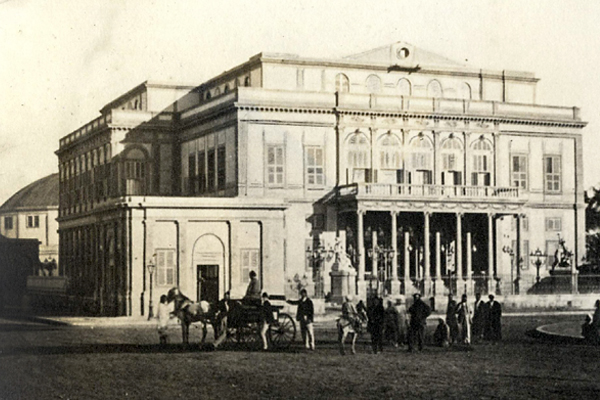
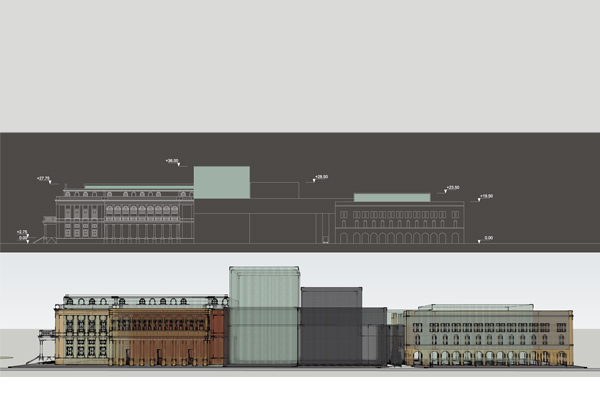
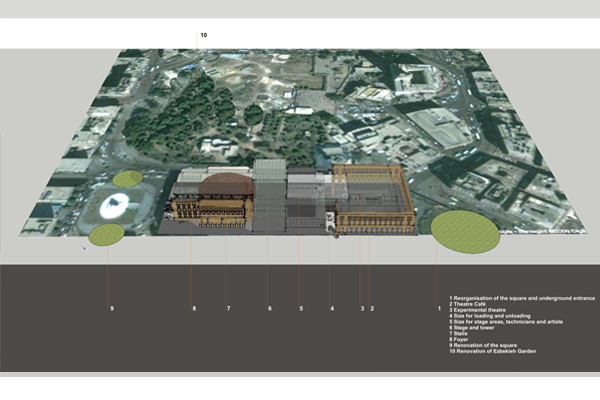
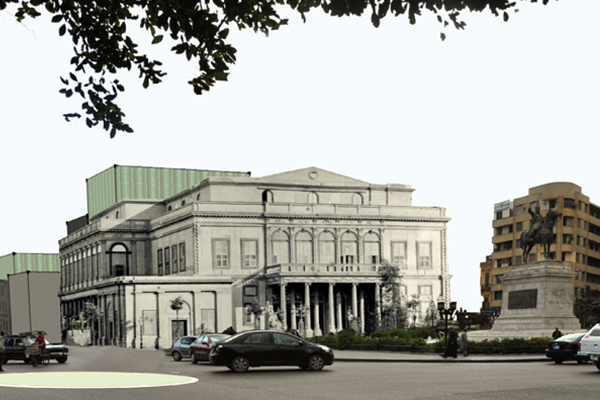
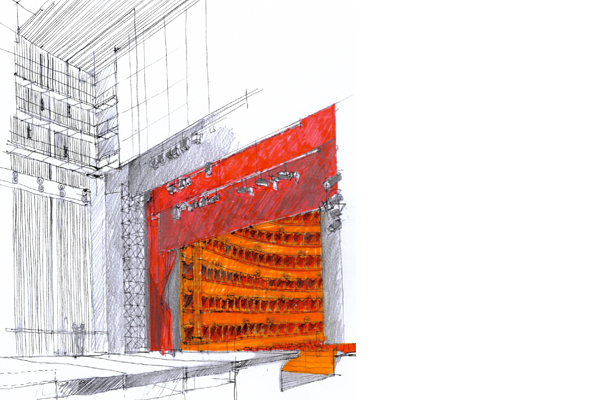
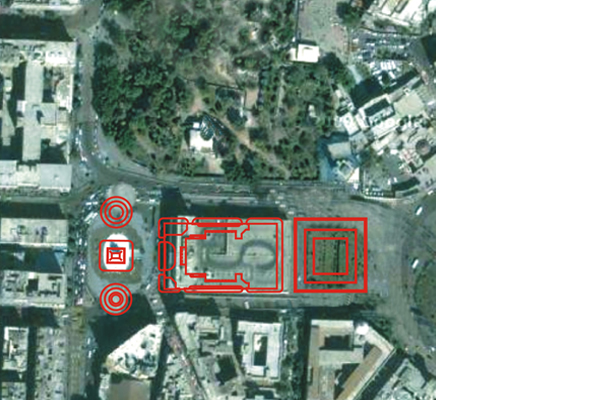
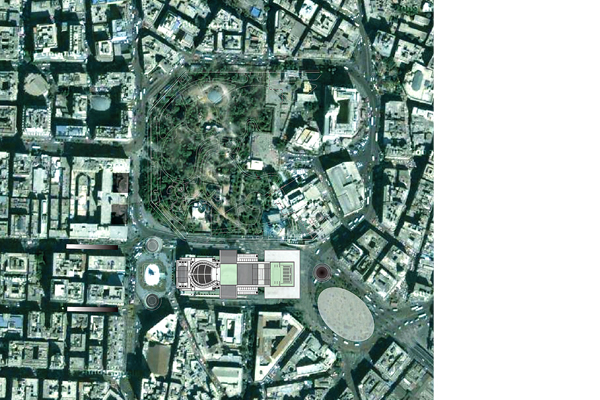
 Museum Engineering S.R.L.
Museum Engineering S.R.L.